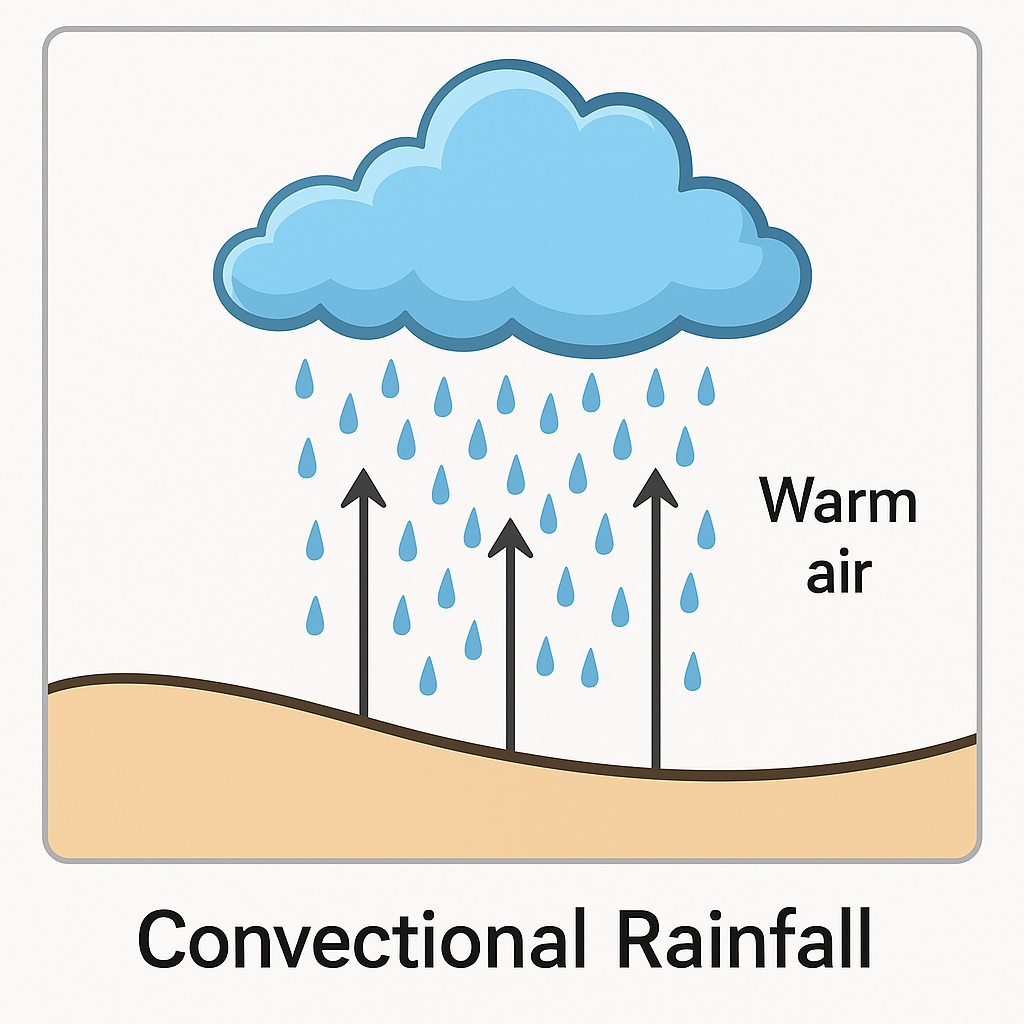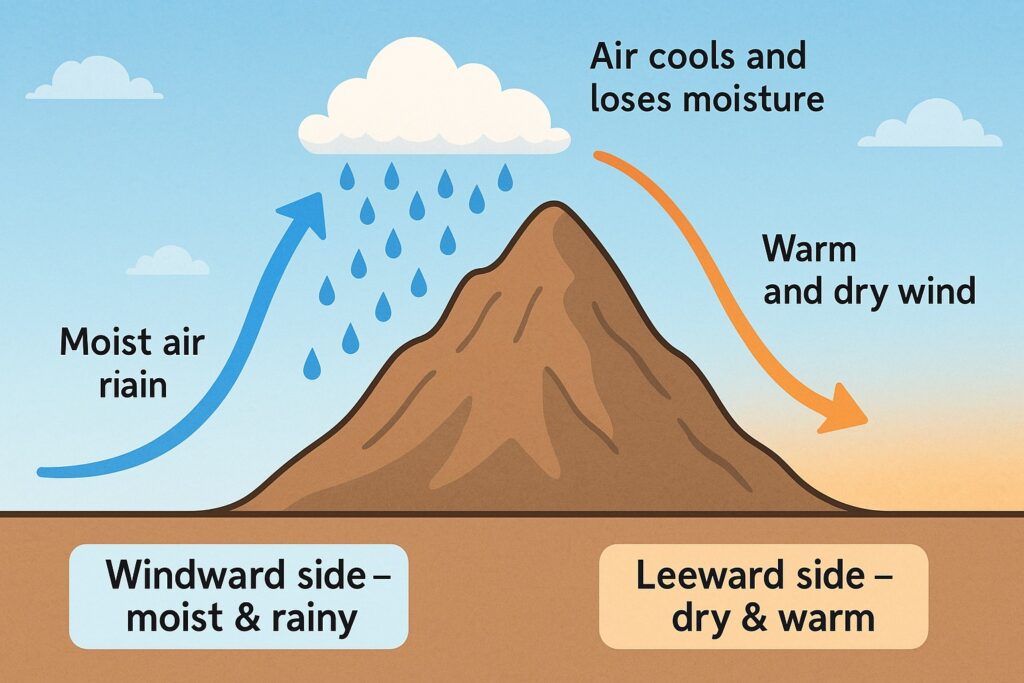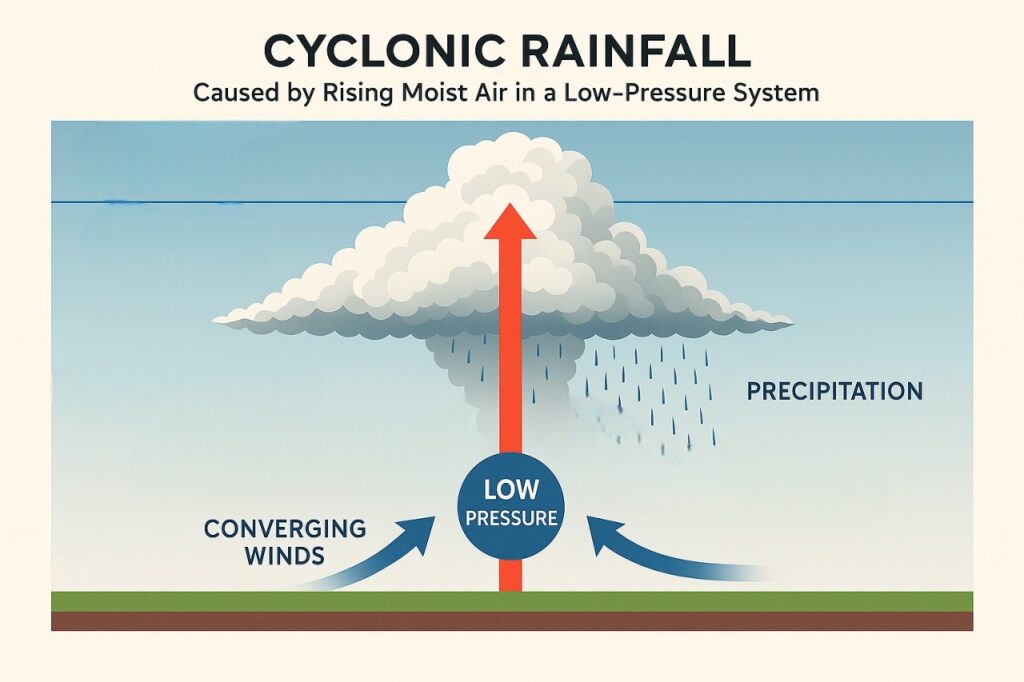Rainfall is a vital component of the Earth’s water cycle, providing water for plants, animals, and human consumption. Rainfall occurs in various forms, ranging from light drizzle to heavy downpours. In this article, we will discuss the different types of rainfall.
Table of Contents
Types of Rainfall
Rainfall is an important part of the Earth’s water cycle and has a significant impact on the environment and human activities. There are several different types of rainfall, each with its own unique characteristics and causes.
Convectional rainfall
Convectional rainfall occurs when the sun heats the ground, causing the air above it to rise and cool, leading to the formation of clouds and rainfall.

Convectional rainfall follows a simple vertical process:
-
Surface Heating: The sun heats the Earth’s surface, especially in the afternoon. This warms the air near the ground.
-
Rising of Warm Air: The heated air becomes lighter (less dense) and starts to rise in a process called convection.
-
Cooling and Condensation: As the air rises, it cools at higher altitudes. The water vapor in the air condenses to form cumulonimbus clouds.
-
Rainfall: Once condensation continues and cloud droplets grow larger, they fall as rain due to gravity.
- It is common in Equatorial regions (e.g., Amazon Basin, Congo Basin, Southeast Asia).

Orographic Rainfall
Orographic rainfall occurs when moist air is forced up over mountains or other topographic features, causing it to cool and condense, resulting in rainfall on the windward side of the mountain. Frontal rainfall occurs when a warm air mass and a cold air mass meet, causing the warm air to rise over the cold air, leading to the formation of clouds and rainfall.

Cyclonic Rainfall
Cyclonic rainfall occurs in areas of low pressure, where converging winds cause moist air to rise and cool, leading to the formation of clouds and rainfall. The low-pressure system causes the air to rise, and the moisture in it condenses to form clouds. The clouds release their moisture as rain, causing heavy rainfall and flooding in some areas.
